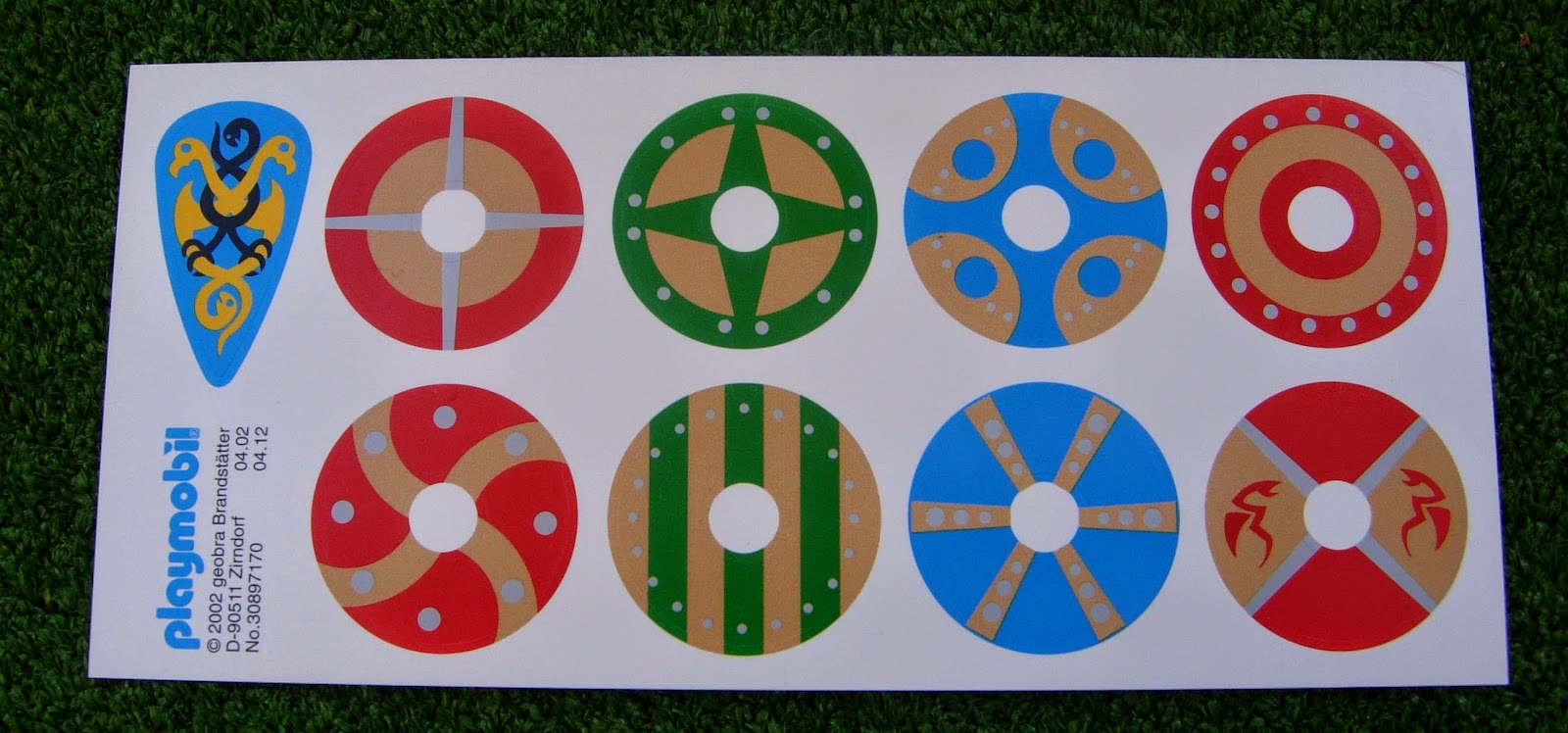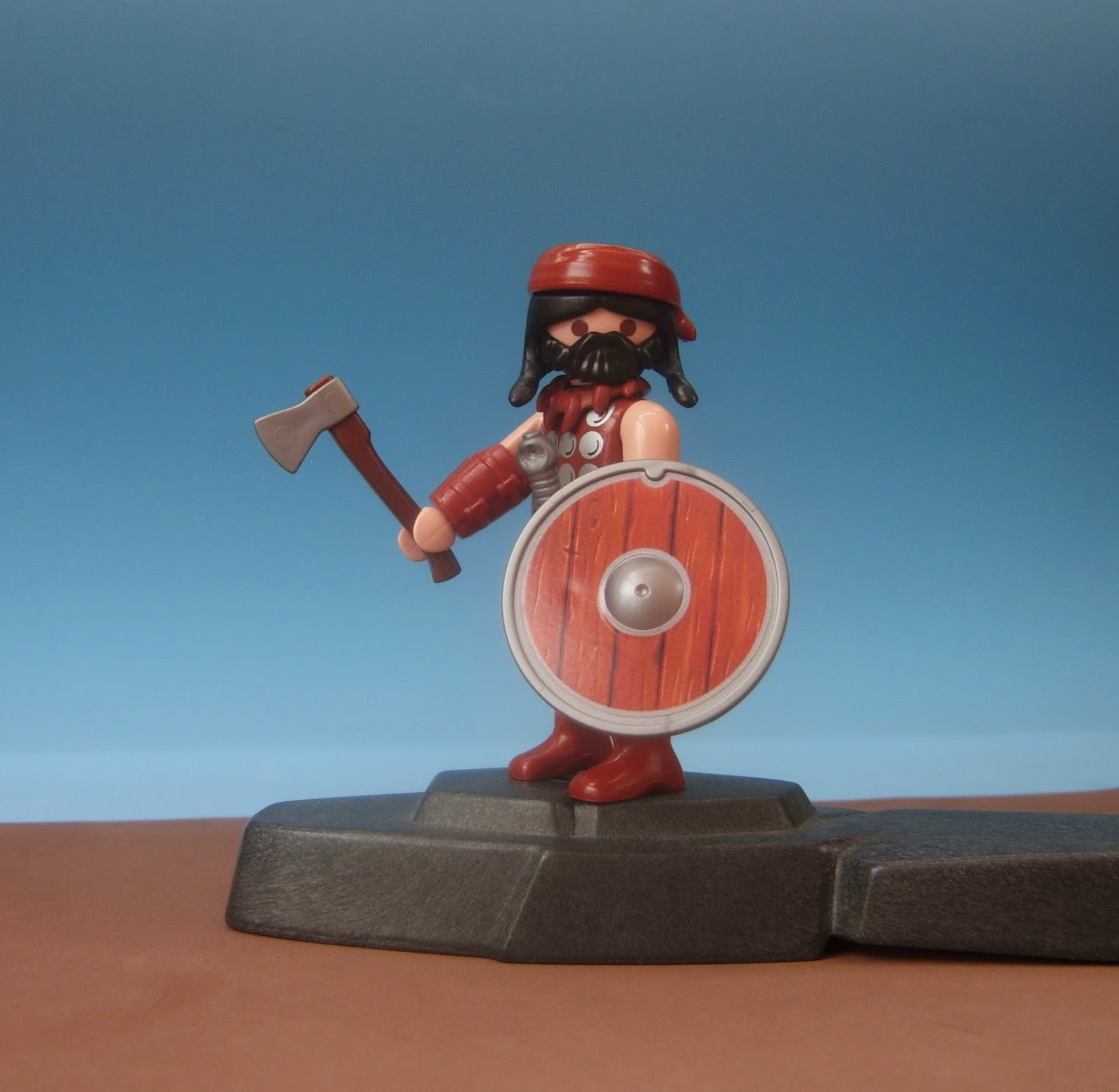Llevamos una temporada dándole
vueltas al tema de los adhesivos de Playmobil. La verdad es que los originales
nos parecen muy buenos. Reconocemos el esfuerzo que hizo Playmobil haciendo una
variedad considerable de pegatinas diferentes. Los accesorios son uno de los
elementos clave de las figuras. Todo el mundo prefiere que sus figuras lleven
una bonita bandera o un escudo vistoso. Playmobil ha optado por generar
diferentes modelos en cada uno de las series que ha incorporado. A día de hoy
existe una gran variedad, no toda de nuestro gusto, que puede ser utilizada. Y
ahí surge Playstickers.
¿Qué es Playstickers? Es un sitio
donde puedes encontrar aquello que posiblemente Playmobil nunca sacará:
Adhesivos de temáticas históricas y fantásticas para tus figuras. Es tu
proveedor de accesorios personalizados y de calidad. La lista de productos es
amplísima. Toca casi todas las temáticas, incluso Lego. Aquí tenéis un enlace
para comprobarlo, Hemos puesto una página dentro del Blog con fotos, que iremos
actualizando.
Nosotros los hemos probado y solo
podemos decir: MARAVILLOSOS.
Cuando pensamos en personalizar
nuestras figuras con pegatinas, en primer lugar pensamos en hacerlas por
nosotros mismos. Miramos un poco y como casi siempre encontramos que hacer poco
para pocos sale caro y lleva mucho tiempo. Hay que aprender las técnicas,
dominar los materiales y contar con maquinaria adecuada. Aun así no está
garantizado el éxito.
También miramos lo que se ofrecía
en Internet, pero no nos convencía demasiado. Diseños muy poco flexibles, demasiado costosos y con
poca garantía de calidad. El problema está en encontrar algo que tenga ese
toque que no desentone en las figuras. Y lo hemos encontrado.
No queríamos nada complicado, creemos que lo sencillo suele dar mejor resultado que lo complicado. Queríamos probar con los escudos, que es un accesorio sencillo, pero que no siempre está disponible. Playmobil suele marcar los escudos con el logo del “equipo” al que pertenece cada serie, lo que limita bastante su uso. Nosotros queríamos algo más polivalente y al mismo tiempo realista. En un ejército medieval la uniformidad era algo que reinaba por su ausencia, raro era que se pudieran “rotular” con imágenes la impedimenta, salvo en el caso de los más pudientes caballeros. Bueno, que me voy por las ramas…
No queríamos nada complicado, creemos que lo sencillo suele dar mejor resultado que lo complicado. Queríamos probar con los escudos, que es un accesorio sencillo, pero que no siempre está disponible. Playmobil suele marcar los escudos con el logo del “equipo” al que pertenece cada serie, lo que limita bastante su uso. Nosotros queríamos algo más polivalente y al mismo tiempo realista. En un ejército medieval la uniformidad era algo que reinaba por su ausencia, raro era que se pudieran “rotular” con imágenes la impedimenta, salvo en el caso de los más pudientes caballeros. Bueno, que me voy por las ramas…
Otra cosa que queríamos probar
era el acabado en madera de los escudos. Aunque Playmobil ha sacado algunos
interesantes en la última serie de dragones, creemos que aún pueden tener
recorrido.
Al final nos atrevimos a ponernos en contacto con Javier, que nos atendió estupendamente, asesorándonos para mejorar nuestras ideas originales y que han tenido sus frutos en unos adhesivos fenomenales, cuya muestra aquí os traemos.
Al final nos atrevimos a ponernos en contacto con Javier, que nos atendió estupendamente, asesorándonos para mejorar nuestras ideas originales y que han tenido sus frutos en unos adhesivos fenomenales, cuya muestra aquí os traemos.
Los precios son muy asequibles,
tanto las pegatinas como lo gastos de envío. Admite Paypal y transferencia
bancaria. Y las pegatinas llegan perfectas.
¿Os atrevéis?
We carry a season mulling over the issue of
adhesives Playmobil. The truth is that the originals are very good. We
recognize the efforts made by Playmobil doing a considerable variety of
different stickers. Accessories are one of the key elements in FIGS. Everyone
prefers that his figures with a nice colorful flag or a beautiful shield.
Playmobil has chosen to build different models in each of the series that has
been incorporated. Today there are a variety, not all on our way, which can be
used. And there arises Playstikers.
What is Playstikers? It is a place where you
can find something that possibly Playmobil never will made : Adhesives of
historical and fantastic themes for your figures. It is your supplier of custom
quality accessories. The product list is extensive. Almost all subjects,
including Lego, are there. Here's a link to check it out, we've put a page on
the blog with photos, which will update.
We have tested and we can only say: WONDERFUL
When we think our figures with customized
stickers, first we think about to make it by ourselves. We watched a bit and as
usual, we found that do little or few things is expensive and consume a lot of
time. You have to learn the techniques, master the materials and have adequate
equipment. Yet success is not guaranteed.
We also look at what is offered on the
Internet, but we were not very pleased. Very inflexible, too expensive and with
little guarantee of quality designs. The problem is finding something that has
that touch that does not clash in the figures. And we got it.
We did not want anything complicated, we
believe that simplicity usually work better than complicated things. We wanted
to try with shields, which is a simple accessory, but that is not always
available. Playmobil usually marks the shields with the logo of the
"team" belongs to each series, which rather limits its use. We wanted
something more versatile and realistic at the same time. In a medieval army
uniform was rare thing, also it was rare that they could "label" with
the clothes images except in the case of wealthy knight. Well, I'm going out on
a limb ...
Another thing I wanted to try was the wood
finish shields. Although Playmobil has released some interesting ones in the
last series of Dragons, I believe that they can still be increased.
At the end we dared to get in touch with
Javier, who greeted us nicely, advising us to improve our original ideas and he
produced some phenomenal adhesives, as shown here.
The prices are very affordable, both as
stickers shipping. Supports Paypal and bank transfer. And the stickers arrive
in perfect condition.
Do you
dare?




























